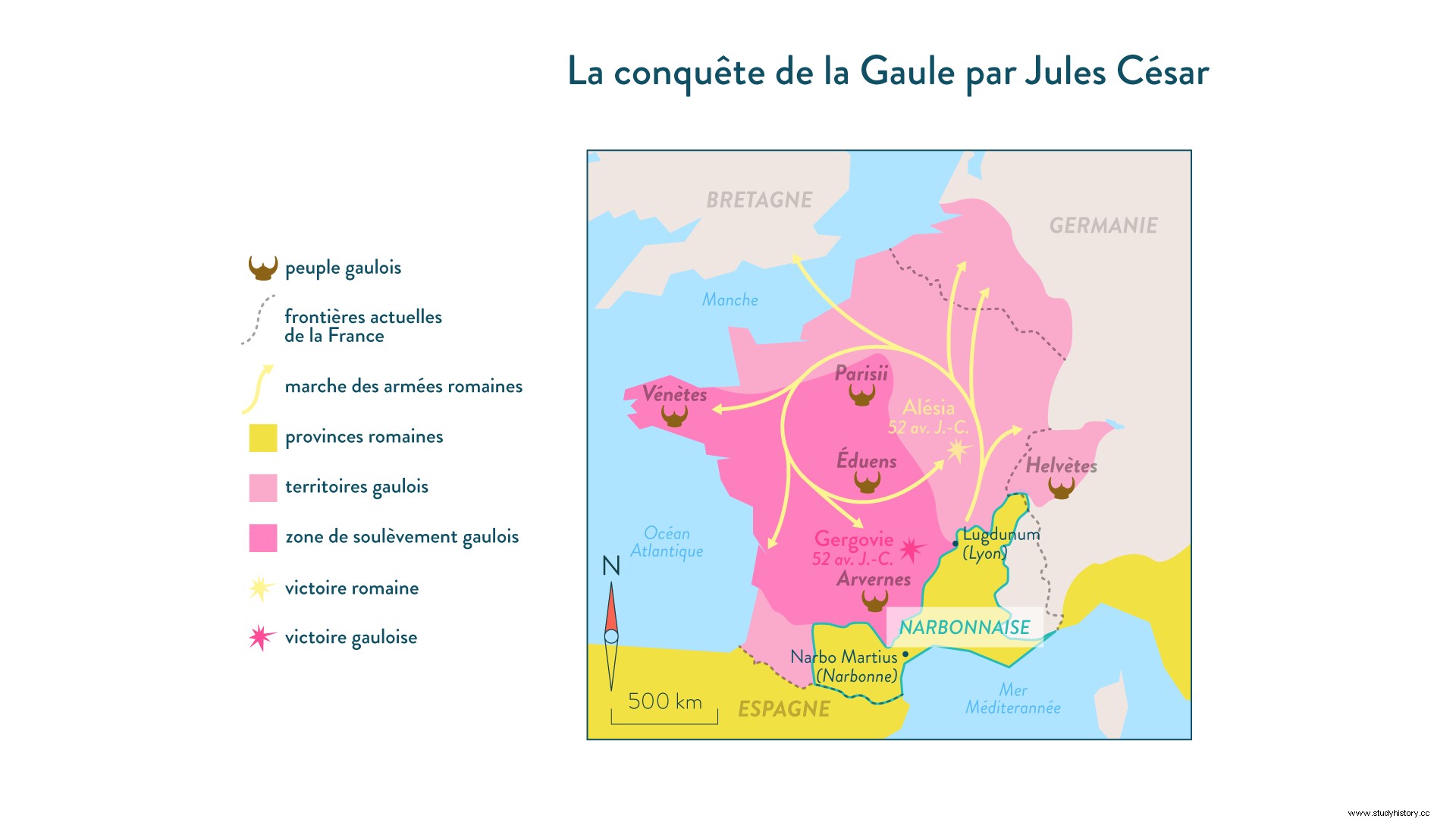Roman power extends around the Mediterranean. The kingdom attracts the ambitious, like Julius Caesar who would like to take the lead of this great Roman territory. He opposes Pompey, a victorious general, so he decides to go in search of military glory. The Senate, which mistrusts Caesar, enjoins him, in -58, to conquer the territory of Gaul.
58 BC J.-C. - 51 BC. AD

Characters
Julius Caesar
Vercingetorix
Procedure
From -58, the Aedui, a Gallic people from the center of the country but an ally of Rome, asked Caesar for help to repel the Helvetians (a people established in the east of Gaul) who wanted to invade them. If they manage to cross the Saône, César nevertheless manages to defeat them at Bibracte (today between Bourges and Dijon). That same year, he pushes back the Germain Arioviste who invaded Burgundy. Then, in -57, they crush the Belgians of Soissons, Beauvais, Amiens, Hainaut or even the Éburons, the Nerviens and the Bellovaques, also Belgians. The Armoricans also surrender. On the other side of the Alps, we are jubilant. A year later, the Vénètes and the Aquitaine bow before the great Roman. Then, it is the turn of the Germans to be driven out.
César then tackles the UK. He must then repress the revolt of the Eburons (Belgian people) whose leader succeeded in destroying a legion (-54 -53):the repression is bloody. But, following the massacre of Orleans by the Romans, Vercingetorix calls the Gauls to insurrection. Caesar, who has withdrawn to the north (-53), is taken aback by the Gallic federator who is fomenting the rebellion. Also, he returned quickly to Narbonne. Having understood the importance of refueling with the locals for the Roman troops, Vercingetorix uses the scorched earth technique (destruction of resources and means of production to prevent the adversary from using them) to starve them.
The Gallic leader and Caesar clash in Gergovie in -52. Vercingetorix held the siege and, despite numerous assaults, the Romans had to fall back, starving. The Gallic people of the Aedui at this time joined the Gallic cause. At Bibracte, Vercingetorix, strong in his victory over the great Caesar, had his title of warlord of the Gallic coalition confirmed.
The same year, the two leaders face each other again. Caesar develops all his military genius by making Vercingetorix believe that he is withdrawing. The Gallic leader attacks him but the Romans turn around. Taken aback, Vercingetorix and his troops fell back to a stronghold (oppidum) in Alesia. But this time, thanks to a double line of fortifications, Caesar surrounded him and prevented his Gallic supporters from coming to his aid. Running out of reserves and ammunition, it was a starving Vercingetorix that had to capitulate in September -52. A year later, after having suppressed the rebellion of Uxellodunum (last battle of the Gallic Wars) in particular, Caesar left Gaul haloed in glory.
Consequences
The conquest of Gaul establishes the prestige of Julius Caesar. In his book The Gallic Wars , famous as much for his eloquence as for the narrated facts, he raises a little more his stature of general-in-chief for purposes of propaganda. In addition, this conquest put an end to the Gallic threat to the Roman world and increased the power of the Roman Empire, Gaul being more than a strategic place for the development of trade.
